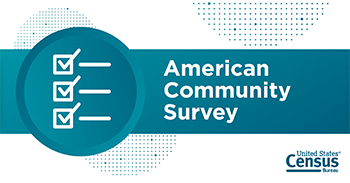 Every year the U.S. Census Bureau does the American Community Survey (ACS)--a survey that is much more detailed than the regular census but only samples a large subset of the population, rather than the entire population. Until 2008, the disability question focused on blindness, deafness, mobility, and other conditions. The change in 2008 was to move to a functional definition of disability by asking a yes/no question about functional limitations in any one of six activities: hearing, seeing, moving, self-care, cognitive, and independent living. Disability was determined by whether the activity was “difficult or very difficult” to do.
Every year the U.S. Census Bureau does the American Community Survey (ACS)--a survey that is much more detailed than the regular census but only samples a large subset of the population, rather than the entire population. Until 2008, the disability question focused on blindness, deafness, mobility, and other conditions. The change in 2008 was to move to a functional definition of disability by asking a yes/no question about functional limitations in any one of six activities: hearing, seeing, moving, self-care, cognitive, and independent living. Disability was determined by whether the activity was “difficult or very difficult” to do.
In October 2023, A new proposed change came out, aimed at capturing disability in a more nuanced way by putting the functional limitation into one of four categories: “no difficulty,” “some difficulty,” “a lot of difficulty,” and “cannot do at all.” These categories were deemed to be in alignment with an international standard adopted by many other countries. This change would go into effect in the 2025 ACS.
A study was done to see how the new way of asking about disability would make a difference. The study demonstrated that the difference between the two definitions was dramatic. In the 2008 scale, any "yes" is counted as disabled. This worked out to about 13.9% in the US population. In the new proposed scale, "a lot of difficulty" or "cannot do at all" is counted as disabled, which would work out to about 8.1% of the population. Yet, if "some difficulty," "a lot of difficulty," or "cannot do at all" is counted as disabled, the result would be about 31.7% of the population. The October 2023 proposal would adopt the new scale that reduced the percentage of disabled persons from 13.9% to 8.1%, effectively removing about 20 million people from identifying as disabled.
The disability community, including allies, submitted over 12,000 comments objecting to the change and discussing other needs to disability identity. The objections fell into several categories including that the new scale would deviate wildly from the prior scale no matter where you put the cut-off for disability and would open up the idea that “someone is not disabled enough.” Another objection category, which I commented on, had to do with whether the six categories listed cover all disabilities and whether a functional definition of disability alone is enough.